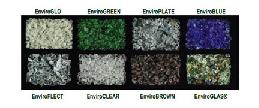 When the world is burning down in fossil fuel, the worried scientist-herd is battling to combat its devastating consequences, by bringing in alternatives to the greenhouse gas producing fuel.
When the world is burning down in fossil fuel, the worried scientist-herd is battling to combat its devastating consequences, by bringing in alternatives to the greenhouse gas producing fuel.
One such proven effective alternative are the ‘hydrogen fuel cells’ that can help lower the emissions of the global warming-triggering gases across the world. Fuel cells release energy by combining hydrogen fuel and oxygen from the air, releasing only water as a waste product, thus keeping the air from being polluted.
In lines to these concerns, scientists have come up with a new way to make cubic zirconia with very small crystal sizes. Once successful, this can help make hydrogen fuel cells not just more reliable, but also cost-effective.
Thanks to Munir, Umberto Anselmi-Tamburini and Sangtae Kim at UC Davis for inventing the new technology, using extremely small sizes of zirconium oxide grain, of 15 nanometers.
Unlike the current fuel cells that run at temperatures of 800 to 1,000 degrees C, with the heat quickly wearing out metal, plastic and ceramic components, the new technology allows the fuel cells to run at much lower temperatures, i.e 50 to 100 degrees C, providing life to components.
Thus, not just life to the materials the new technology also turns out to be affordable for the environment-conscious people, who would prefer using hydrogen fuel cells for their vehicles if it does not fall heavily on their pockets.




